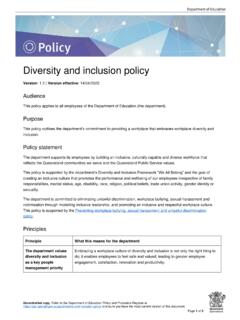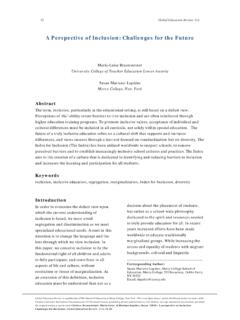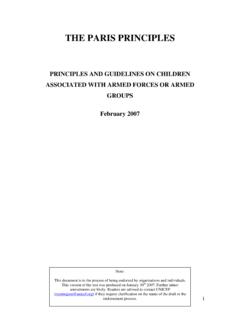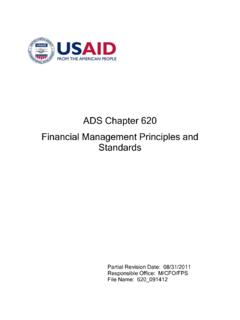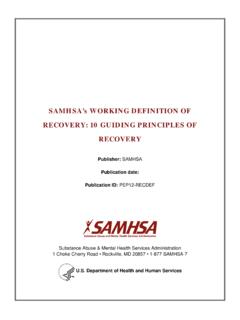Transcription of on Diversity & Inclusion,
1 THE UNIVERSITY OF CALIFORNIA, LOS ANGELES is an institution that is firmly rooted in its land-grant mission of teaching, research, and public service. The campus community is committed to discovery and innovation, creative and collaborative achievements, debate and critical inquiry, in an open and inclusive environment that nurtures the growth and development of all faculty, students, administration and staff. These principles of Community are vital for ensuring a welcoming and inclusive environment for all members of the campus community and for serving as a guide for our personal and collective We believe that Diversity is critical to maintaining excellence in all of our We seek to foster open-mindedness, understanding, compassion and inclusiveness among individuals and We are committed to ensuring freedom of expression and dialogue, in a respectful and civil manner, on the spectrum of views held by our varied and diverse campus We value differences as well as commonalities and promote respect in personal We affirm our responsibility for creating and fostering a respectful, cooperative.
2 Equitable and civil campus environment for our diverse campus We strive to build a community of learning and fairness marked by mutual We do not tolerate acts of discrimination, harassment, profiling or other conduct causing harm to individuals on the basis of expression of race, color, ethnicity, gender, age, disability, religious beliefs, political preference, sexual orientation, gender identity, citizenship, or national origin among other personal characteristics. Such conduct violates UCLA s principles of Community and may result in imposition of sanctions according to campus policies governing the conduct of students, staff and We acknowledge that modern societies carry historical and divisive biases based on race, ethnicity, gender, age, disability, sexual orientation, and religion, and we seek to promote awareness and understanding through education and research and to mediate and resolve conflicts that arise from these biases in our principles of Community statement was developed by the Chancellor s Advisory Group on Diversity , since renamed the UCLA Council on Diversity & inclusion , which is comprised of representatives from administration, faculty, staff, students, and alumni.
3 For more information or to download copies of the statement, please see OF COMMUNITY 3 CONTENTS4 Understanding the Educational Benefits of Diversity8 Addressing Diversity Challenges in the Classroom14 Engaging in Issues Related to Diversity in the Classroom20 References22 Resources: Teaching for DiversityUCLA S principles OF COMMUNITY lay out the importance of teaching, Diversity , and ensuring a welcoming and inclusive environment for all members of the campus community. As student bodies become increasingly diverse, it is important for faculty members to understand the dynamics associated with diverse campuses and how Diversity can provide a rich social environment that can promote students learning and development. How faculty members engage with Diversity in the classroom can play a critical role in student experiences, satisfaction, and learning outcomes.
4 This booklet summarizes empirical studies on the educational benefits of Diversity , examines some of the challenges associated with Diversity in the classroom, and presents research on microaggressions in order to help faculty members meet the needs of diverse students responsibly and create a classroom environment where all students feel safe, valued, and respected. Additionally, the booklet provides a discussion on how to engage in issues related to Diversity and diverse perspectives in the classroom and offers additional resources for faculty seeking to bring forth the value of Diversity in their teaching and curricular JUAN C. GARIBAYP lease contact UCLA s office of Diversity & Faculty Development for permission to reproduce this booklet for educational purposes. Email or call (310) OF COMMUNITY4 Understandingthe Educational Benefits of DiversityMEANINGFUL ENGAGEMENT PREPARES STUDENTS FOR LIFE IN AN INCREASINGLY COMPLEX AND DIVERSE SOCIETYD iversity in the Classroom, 2014 5AN INCREASINGLY DIVERSE cam-pus increases the likelihood that students will engage with oth-ers who are from different backgrounds (Chang, 1999).
5 As individuals are exposed to diverse groups or attend a highly di-verse institution they are often exposed to experiences, perspectives, and opinions different from their own. This intergroup contact and exposure to diverse perspec-tives provides important opportunities for learning to occur. Psychological theories of minority influence indicate that hav-ing minority opinions present in groups stimulates cognitive complexity among majority opinion members (Gruenfeld et al., 1998). Scholars contend that this dis-continuity from students home environ-ments provides students with a social and intellectual environment that challenges them in ways that enhances their cogni-tive and identity development (Milem et al., 2005). On the contrary, homogenous environments restrict learning opportuni-ties across social and cultural lines (Hur-tado et al.)
6 , 1994). While the educational benefits of Diversity are extensive, educa-tors need to understand what the benefits associated with Diversity are and how to realize the conditions required in order to achieve these benefits. Psychological theories of minority influence indicate that having minority opinions present in groups stimulates cognitive complexity among majority opinion BENEFITS OF DIVERSITYMEANINGFUL ENGAGEMENT with diverse peers and exposure to Diversity issues in the curriculum prepares students for life in an increasingly complex and diverse society. n Brainstorming sessions among diverse groups have been shown to generate ideas that are of higher quality in feasibility and effectiveness (McLeod et al., 1996). n Group discussions that include viewpoints from diverse students have been shown to stimulate discussion of multiple perspectives and previously unconsidered alternatives showing a higher level of critical analysis of decisions and alternatives (Antonio et al.
7 , 2004; Nemeth, 1995, 1985; Schulz-Hardt et al., 2006; Sommers, 2006). n Students who interacted with diverse peers both informally and within the classroom showed the greatest engagement in active thinking, growth in intellectual engagement and motivation, and growth in intellectual and academic skills (Gurin, 1999; Gurin et al., 2002). Meaningful engagement rather than casual and superficial interactions led to greater benefit from interaction with racially diverse peers (Espenshade and Radford, 2009).n Engagements with Diversity fosters students cognitive and personal growth including their cultural knowledge and understanding, leadership abilities, and commitment to promoting understanding. Students develop more accurate knowledge, students learn to think more deeply, actively, and critically when they confront their biases and change erroneous information (Antonio, 2001a, 2001b; Antonio et al.
8 , 2004). n Completion of a Diversity course requirement reduces students level of racial prejudice (Chang, 2002), and is associated with students cognitive development (Bowman, 2010) and civic behaviors and dispositions (Bowman, 2011).n Individuals who are educated in diverse settings are far more likely to work and live in diverse environments after they graduate (Hurtado et al., 2003). Diversity within the academy enriches scholarship and Scholars from minority groups have expanded and enriched scholarship and teaching in many academic disciplines by offering new perspectives and by raising new questions, challenges, and concerns (Antonio, 2002; Nelson and Pellet, 1997; Turner, 2000)n Women and faculty of color are more frequently employing active learning techniques (for example, class discussion, student-selected topics, among others) or student-centered pedagogy in the classroom, encouraging student input, including perspectives of women and minorities in their coursework, and attending workshops designed to help them incorporate the perspectives of women and racial/ethnic minorities into their courses (Hurtado et al.
9 , 2012; Milem, 2003). Student-centered pedagogy has been shown to increase student engagement, particularly in STEM introductory courses (Gasiewski et al., 2012), while extensive lecturing has been found to negatively affect student engagement and achievement (Astin, 1993)IN ORDER FOR underrepresented populations to thrive, a sufficient number of diverse students must be A lack of Diversity can lead to tokenism of underrepresented students and being a part of an underrepresented group on a campus can produce negative social stigma ( , Fries-Britt, 1998; Fries-Britt and Turner, 2001, 2002; Steele, 1992, 1997, 1998; Steele and Aronson, 1995) and Diversity in the Classroom, 2014 7 Brainstorming sessions among diverse groups has been shown to generate ideas that are of higher quality in feasibility and effectiveness. other minority status stressors (Prillerman et al.
10 , 1989; Smedley et al., 1993) that adversely affect student Underrepresented and marginalized groups benefit educationally from intragroup contact. For example, students of color benefit from same-race interaction in ways that white students do not, as students of color create social and academic counterspaces to support their achievement against an often hostile campus climate (Sol rzano et al., 2000). n It is especially important that no single group of students especially students of color and other marginalized populations be unintentionally burdened as the Diversity with whom all others should interact. Increasing the representation of these groups may provide a context that helps prevent this from occurring (Milem et al., 2005). n Increasing the representation of historically marginalized groups in organizations that are largely dominated by a single social group is critical for others to overcome status leveling and stereotyped role induction.





